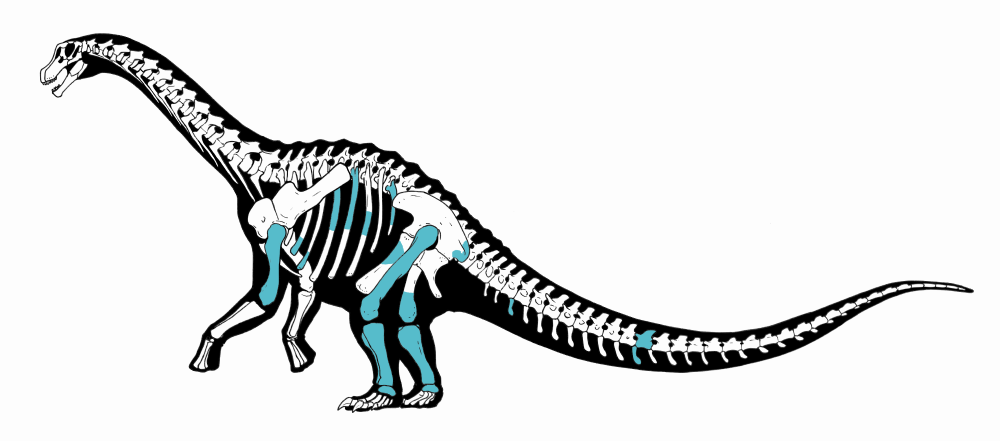A new species of titanosaur has been described from Argentina. Found in rocks dating back almost 70 million years, the mini job has been named Titanomachya gimenezi and was 10 times smaller than its largest titanosaur relatives, making it one of the smallest ever described.
The fossils were retrieved from Chubut Province in Patagonian Argentina where scientists have been digging in La Colonia Formation. There, they uncovered forelimbs, hindlimbs, and fragments of ribs and vertebrae of the mystery titanosaur species – marking the first sauropod from La Colonia Formation ever to be recognized.

The fossils of Titanomachya gimenezi found in La Colonia Formation.
Image credit: Gabriel Lio
Elsewhere in Argentina, some of the largest dinosaurs ever to roam the Earth have been found, including the colossal lump that was Patagotitan mayorum. At the other end of the scale sits Titanomachya at around 7 tons in weight and – as Riley Black wrote for National Geographic – about the size of a massive cow, making it about 10 times smaller than Patagotitan.
Titanomachya lived during the Maastrichtian, the last age of the Cretaceous period that preceded the mass extinction. Its fossils were retrieved from a formation that has yielded everything from hefty carnivores to plesiosaurs, turtles, and reptiles, but it was soon clear that this titanosaur wasn’t something they’d seen before.
“The morphology of the talus – the bone responsible for distributing the force coming from the tibia on the inside of the foot – was never seen before in other titanosaurs and shows intermediate traits between the Colossosauria and Saltasauroidea lineages, highlighting its evolutionary importance,” said first author Agustín Pérez Moreno from CONICET and Museo de La Plata in a statement.
The discovery was unearthed as part of a project on the end of the age of dinosaurs in Patagonia, which is funded by the National Geographic Society, with the support of more than 10 museums and universities in Argentina including Museo de La Plata. It aims to fill in a gap in our knowledge about the last 15 million years of the Cretaceous Period, and the dinosaurs and vertebrates that lived in the region during that time.
It’s a period of geological time that’s historically been better studied in northern locales, and it’s hoped that digging into the south will enable scientists to identify extinction patterns here relative to the rest of the world. Already, the project is providing insights into the landscape of dinosaurs in Patagonia during the Late Cretaceous Epoch.
“The discovery of Titanomachya, adds to previous data suggesting there was a major ecological change as the Cretaceous [Period] was coming to an end, marked by the downsizing of titanosaurs, a decrease in their abundance, and the predominance of other herbivorous dinosaurs, such as hadrosaurs on the landscape,” said National Geographic Explorer Diego Pol in a release. “This ecological shift in herbivorous dinosaurs occurred amidst changing climates and habitats, as well as the advance of the Atlantic Ocean over large parts of Patagonia.”
The study is published in Historical Biology.
Source Link: Anyone For A Mini Titanosaur? New Species Is One Of The Smallest Ever Found